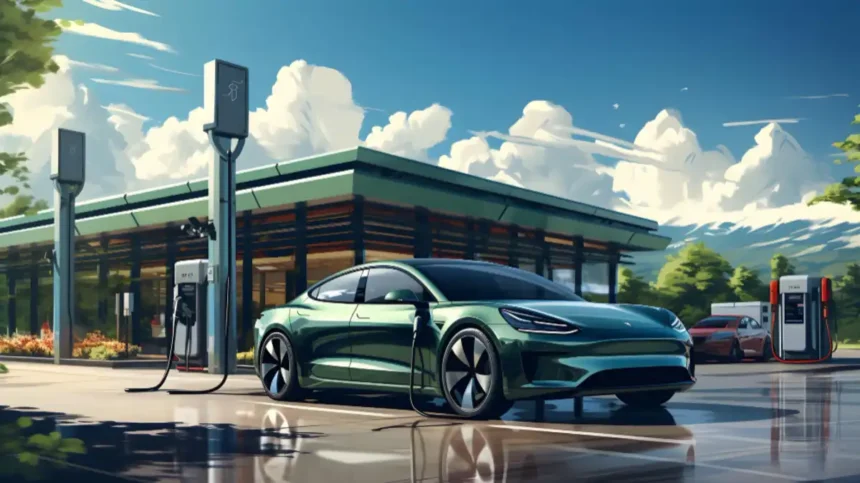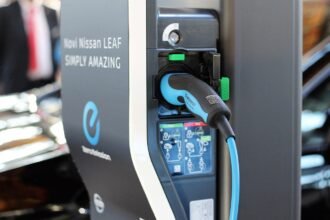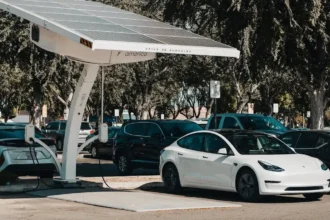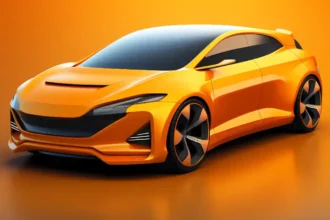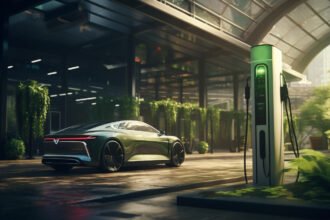As electric vehicles (EVs) continue to rise in popularity, have you ever wondered how the infrastructure to support them is keeping pace? Specifically, how are electric charging stations evolving across the USA to meet the growing demand of EV owners?
In this comprehensive guide, we’ll dive deep into the evolution of EV charging in the United States, explore the latest trends in charging technology, and examine how the future of electric charging stations will shape the future of transportation. If you’re an EV owner or thinking of switching to one, you’ll want to know what’s next for charging infrastructure, and how it can impact your driving experience.
Rise of Electric Vehicles in the USA: A Need for Infrastructure
In recent years, the demand for electric vehicles has surged in the USA. With the push toward greener energy and the need to reduce carbon emissions, EV sales have soared. According to industry data, EV sales in the U.S. accounted for about 7.2% of new vehicle registrations in 2023, a significant increase from previous years. But as more Americans choose electric over traditional gasoline-powered cars, the country faces a critical challenge: electric charging station infrastructure.
To support this surge in EVs, EV charging growth must be rapid and expansive. Without a reliable and widespread network of charging stations, potential EV buyers might hesitate to make the switch. So, how exactly are electric charging stations evolving to meet this need?
Key Innovations in Electric Charging Stations
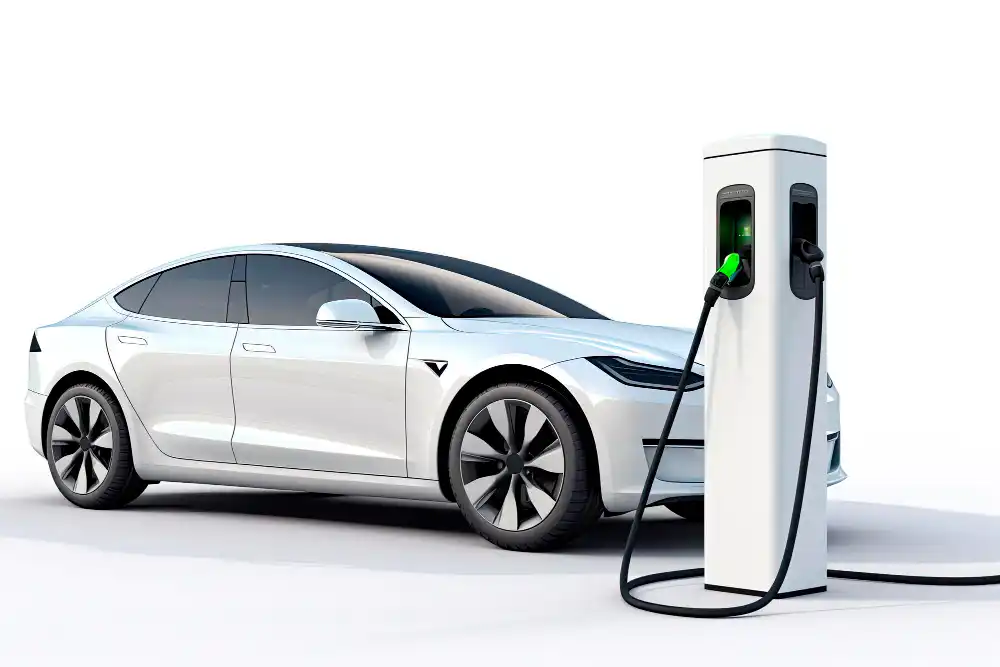
1. Fast-Charging Networks: Reducing Charging Time
One of the biggest challenges facing EV owners is charging time. Traditional charging stations, or Level 1 chargers, can take hours to fully charge a vehicle. However, fast-charging networks are emerging as a solution to this issue. Electric charging stations equipped with Level 3 chargers, also known as DC fast chargers, can charge an EV up to 80% in as little as 20 minutes.
With major companies like Tesla expanding their Supercharger networks and other businesses launching ultra-fast chargers, EV charging growth is accelerating. These stations are popping up along highways, making long-distance EV travel more convenient than ever before.
2. Wireless Charging: The Future of Effortless Refueling
Imagine parking your EV and having it automatically charge without plugging in a single cable. Wireless charging technology is being tested in several cities across the USA. This system involves using electromagnetic fields to transfer energy between a charging pad embedded in the ground and the vehicle’s receiver.
While still in the experimental phase, wireless electric charging stations have the potential to revolutionize the way we think about refueling. Not only will it make charging effortless, but it will also reduce wear and tear on charging cables and connectors.
3. V2G (Vehicle-to-Grid) Integration: Energy Sharing
An emerging concept that has gained momentum is Vehicle-to-Grid (V2G) integration. This system allows EVs to send unused energy back to the power grid during peak energy demands. This means that electric charging stations won’t just take power from the grid but also contribute to balancing energy use.
As more EVs hit the road, this energy-sharing technology could play a significant role in stabilizing electricity demand in the USA.
Major Companies Driving EV Charging Growth
Several key players are spearheading the expansion of electric charging infrastructure in the USA. Here’s a look at some companies leading the charge:
- Tesla Supercharger Network: Tesla’s proprietary network of high-speed chargers remains one of the most extensive in the USA. Superchargers are strategically located along highways and popular travel routes, enabling Tesla drivers to quickly recharge during long trips.
- Electrify America: A subsidiary of Volkswagen Group, Electrify America is committed to installing thousands of charging stations across the country. With a focus on fast chargers, the company aims to make EV ownership more feasible for Americans.
- ChargePoint: With over 100,000 charging stations in its network, ChargePoint is one of the largest public EV charging providers in the USA. Their stations are often found in parking lots, shopping centers, and workplaces.
Role of Federal and State Governments in EV Charging Growth
The EV charging growth story wouldn’t be complete without acknowledging the critical role played by the U.S. government. Several initiatives and incentives have been introduced to encourage the expansion of charging infrastructure:
1. Biden Administration’s EV Charging Infrastructure Plan
In 2021, President Joe Biden unveiled a plan to build 500,000 new electric charging stations across the country by 2030. This ambitious goal is part of the larger effort to reduce carbon emissions and transition the country toward clean energy.
2. State-Level Incentives
Individual states are also stepping up to support the expansion of EV infrastructure. For example, California, New York, and Colorado have introduced incentives for businesses and property owners to install charging stations. In California, the state government has committed to banning the sale of new gasoline-powered cars by 2035, further driving EV charging growth.
3. Tax Credits and Rebates
The federal government offers tax credits to businesses and individuals who install electric charging stations. These incentives make it more financially viable to contribute to the national charging network, encouraging more widespread installations.
A Look at Charging Speed Tiers
When discussing electric charging stations, it’s essential to understand the different types of chargers available. Each type has its advantages and limitations, particularly in terms of charging speed. Here’s a breakdown:
| Charging Level | Charging Time | Description |
|---|---|---|
| Level 1 | 12-24 hours | Standard household outlet (120V), ideal for overnight home charging. |
| Level 2 | 4-6 hours | Requires a 240V outlet, commonly found at home or public charging stations. |
| Level 3 (DC Fast Charging) | 30 minutes to 1 hour | Fastest charging option, found at highway stations, delivers rapid charge for long-distance trips. |
| Wireless Charging | Experimental | Still in the testing phase, but could offer a hands-free charging experience. |
Challenges Facing EV Charging Growth in the USA
Despite the rapid expansion of electric charging stations, several challenges remain that could slow EV charging growth:
- Infrastructure Gaps: While urban areas are seeing significant growth in charging stations, rural and remote locations are still underserved. This creates challenges for long-distance travel and could dissuade some potential EV buyers.
- High Installation Costs: Installing fast chargers and wireless systems can be expensive. Although government incentives help, businesses and property owners may hesitate to invest without clear financial returns.
- Energy Demand: As the number of EVs grows, so does the demand for electricity. The power grid in some areas may struggle to keep up, especially during peak times. V2G technology could help, but it’s not yet widespread.
FAQs on Electric Charging Stations
Q1: How long does it take to charge an electric vehicle?
A: Charging time depends on the type of charger used. A Level 1 charger (standard household outlet) can take up to 24 hours for a full charge, while Level 3 fast chargers can charge an EV up to 80% in under 30 minutes.
Q2: Are there enough electric charging stations in the USA?
A: While the number of stations is growing rapidly, there are still gaps in rural areas. The government and private companies are working to fill these gaps with thousands of new charging stations over the next few years.
Q3: Can I charge my EV at home?
A: Yes, most EV owners charge their vehicles at home using a Level 1 or Level 2 charger. Installing a Level 2 charger at home is recommended for faster charging times.
Q4: Is wireless charging available for EVs?
A: Wireless charging technology is still in the testing phase, but several companies are working to make it commercially available in the near future.
The Future of EV Charging in the USA
The future of electric charging stations in the USA looks bright, with innovations like wireless charging, faster stations, and smart energy-sharing systems. As EV charging growth continues to accelerate, the USA is on its way to building a more sustainable, efficient, and widespread network to support electric vehicles.
As the infrastructure evolves, EV ownership will become increasingly practical for all Americans, helping to reduce carbon emissions and shift the nation towards greener energy. Whether you’re already an EV owner or considering making the switch, you can rest assured that the future of EV charging is just around the corner.
In conclusion, the evolution of electric charging stations in the USA is paving the way for a cleaner and smarter future, one charge at a time.


